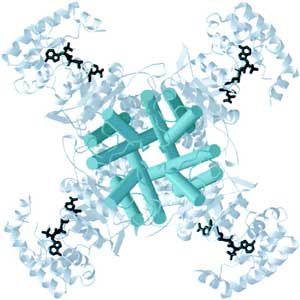
Research interests: Current research in this laboratory is focused on two areas:
- Probing the structural and functional domains of the acid sensing Ion channel.
- Role of gap junctions in Ischemic heart disease.
Probing the structural and functional domains of the acid sensing Ion channel
In India, more than a million people suffer strokes each year. The primary cause of stroke is insufficient oxygen supply to brain tissue, followed by a drop in extra-cellular pH that in turn activates calcium permeable ‘Acid-sensing ion channels’ (ASICs). Excessive rise of intracellular calcium mediated through ASICs is believed to be the cause of neuronal cell death. The discovery of therapeutic compounds targeting ASICs has been limited by a paucity of structural data relating to channel function. The aim is to focus on the following aspects of ASICs:
1) Identifying the channel-lining residues of ASIC1a (the most abundant isoform in brain)
2) Studying the conformational changes that occur during channel gating from the closed to open/desensitized states
3) To identify the position of the gate that blocks the conduction of ions in he closed state of the channel.
Our approach is multidisciplinary in nature.Successful completion of the project will provide new insights into the dynamics of the channel- lining domain of ASIC in the closed state and also as the channel undergoes its conformational changes during gating.
Role of gap junctions in Ischemic heart disease
In India, more than a million people suffer ischemic heart disease and subsequent heart attack each year. Cardiac ischemic occurs when blood flow to the cardiac muscle is obstructed by a partial or complete blockage of a coronary artery. In mammalian heart, gap junction (GJ) protein establish electrical coupling between cardiomyocytes by forming intercellular channels. GJ is formed by the docking of two hemichannels or connexons from adjacent cells. Cell- cell coupling is necessary for impulse propagation, exchage of nutrients and signaling molecules, and synchronized contraction of cardiac chambers. Alterations in GJ organization or function may lead to cardiac arrhythmias and heart attack. It has been known for several years that in ischemic heart disease, cell-cell coupling is affected. However the molecular mechanisms of ischemic-induced uncoupling of GJ communication have not been studied.. We focus on following aspects of cardiac GJs:
1) Changes in the electrophysiological properties of different cardiac GJs during ischemia
2) Mechanisms of cardiac hemichannel opening
3) Relation between cardiac cell death and hemichannel opening
4) Structural differences of hemichannel and GJ channel.
For this, we use a combination of molecular, biochemical, electrophysiological and fluroscense-imaging techniques. Such studies may help to identify the role of different GJs in normal cardiac physiology and to identify new pathways/sites for therapeutic intervention.